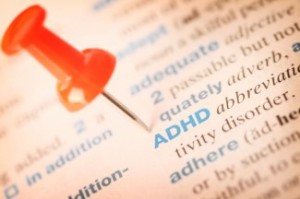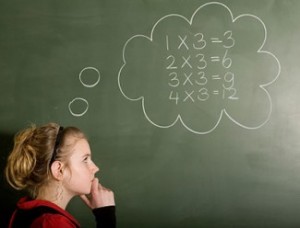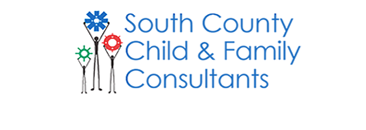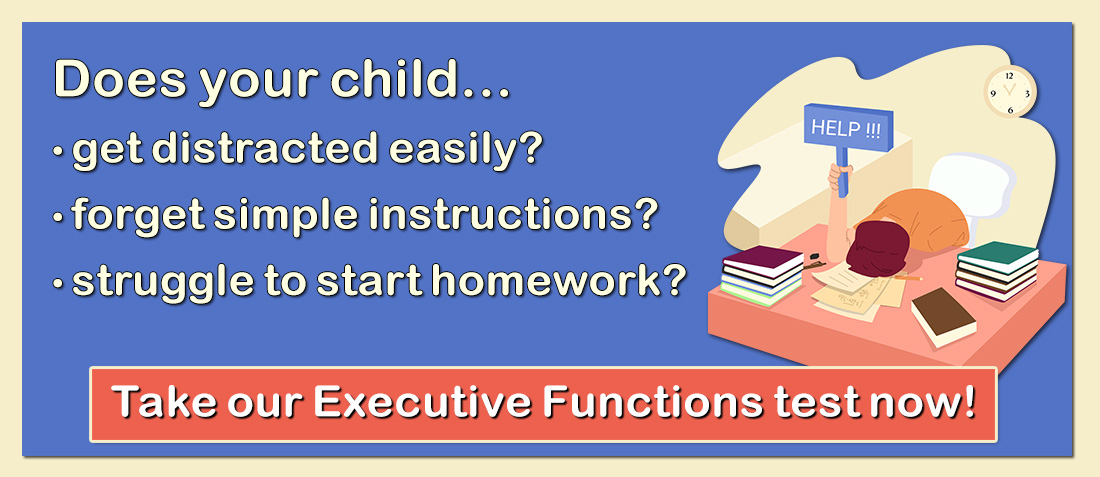“His teachers say he’s defiant but I know he’s really a good kid; how do I prevent his ADHD from ruining his chance at getting into a good college?”
“She wants to be on the team but the coach says she can’t follow directions; how can I get her off the bench and back in the game?”
“He can’t even sit through a family meal, how can I expect him to sit through his classes, a test, or a service at church?”
“She’s smart but her teachers keep faulting her for blurting out the answers in class; how can I help her control her impulsivity so she can stop being teased by her peers?”
“He gets so frustrated and down on himself; how can I help him improve his self-esteem?”
“Is medication really the best option? What are the long term effects of stimulant medications?”
“Am I doing what’s best for my child? ‘How do I know what the best option is? What else can I do?”
 Like any parent, parents of ADHD children just want what’s best for their child. But often, it can feel like ADHD symptoms are standing in the way. As parent’s, we’ll do just about anything to help our kids stay safe, happy, and healthy so that they can grow and achieve their goals. When ADHD symptoms seem like they’re getting in the way it is important for parents to know that there are treatments to address these symptoms. For some families, medication may be the best treatment option. For others, medication may prove to be ineffective, or may just not be a suitable option. Whether you are a parent looking for new ways to treat ADHD symptoms in conjunction with medication, or looking for a substitute for it, the following alternative treatments may prove to be a viable way for your family to manage ADHD symptoms.
Like any parent, parents of ADHD children just want what’s best for their child. But often, it can feel like ADHD symptoms are standing in the way. As parent’s, we’ll do just about anything to help our kids stay safe, happy, and healthy so that they can grow and achieve their goals. When ADHD symptoms seem like they’re getting in the way it is important for parents to know that there are treatments to address these symptoms. For some families, medication may be the best treatment option. For others, medication may prove to be ineffective, or may just not be a suitable option. Whether you are a parent looking for new ways to treat ADHD symptoms in conjunction with medication, or looking for a substitute for it, the following alternative treatments may prove to be a viable way for your family to manage ADHD symptoms.
The following sections include descriptions of some of the latest research that supports the use of alternative treatments to improve ADHD. Much of the research data is preliminary and we do not specifically endorse any of the following strategies, but want to help parents to inform themselves. We also provide links so that you can explore additional studies and reports, and a book list for further reading.
Yoga & Meditation
 For some parents, expecting their ADHD child to sit still through a yoga or meditation session might seem like a stretch. But in fact, because of their nature, yoga and meditation have been shown to be effective in calming children, controlling impulsivity, and maintaining attention/awareness. They are also believed to have positive outcomes for the body as a whole (e.g. posture improvement, healthful breathing, etc.)
For some parents, expecting their ADHD child to sit still through a yoga or meditation session might seem like a stretch. But in fact, because of their nature, yoga and meditation have been shown to be effective in calming children, controlling impulsivity, and maintaining attention/awareness. They are also believed to have positive outcomes for the body as a whole (e.g. posture improvement, healthful breathing, etc.)
For more information on using yoga and meditation as alternative ADHD treatments see the following resources:
Free Meditation: Provides an overview of ADHD and presents a study that confirms the benefits of meditation for ADHD.
LA Yoga Magazine: Suggests alternative treatments for ADHD symptoms including yoga, meditation, homeopathy, etc.
Exercise, Sports, and Athletic Activities
Many parents are anxious for their child to become involved in athletic activities, and for good reason. Physical exercise has numerous physiological and emotional benefits. Physical exercise is known to produce endorphins, promote a healthy weight, teach children about competition and perseverance, build self esteem, and promote brain function — many of which can be extremely beneficial in addressing ADHD symptoms. However, finding the right sport or athletic activity is particularly important for ADHD children as each requires different skill sets. For instance, basketball often requires a sustained level of attention, as players must wait their turn to bat and man their field position. However, athletic pursuits that require near constant interaction and a high level of physical and mental focus can be beneficial for children with ADHD symptoms, such as karate and martial arts.
For more information on Exercise, Sports, and Athletic Activities as an alternative ADHD treatment see:
ADDitude Mag: Explains why exercise is beneficial to the ADHD brain.
ADDitude Mag: Ranks the best and worst sports for children with ADHD, and examines why some sports are more promising than others.
Mental Help: Examines the neurological benefits of exercise and compares these benefits to those of medications, such as Ritalin.
Baby Center : Offers examples of the best and worst after-school activities for kids with ADHD.
Reconnecting with Nature
A recent study that examined the presence of ADHD symptoms in children in green landscapes versus indoor areas found that symptoms were greatly reduced in children participating in outdoor activities. Another study suggests that this may be due to the fact that outdoor environments provide a calming effect, help children to cope with stress more effectively, and may enable them to think more clearly. Connecting with nature and removing oneself from the over-stimulating environment that is often found indoors is beneficial for any child, but particularly those with ADHD.
For more information on using Nature as an alternative ADHD treatment see the following resources:
ADDitude Mag: Examines why outdoor exercise may be a more beneficial and appealing alternative to time spent at the gym for those with ADHD.
Diet and Supplements
Parents of children with ADHD are often concerned with the role that diet might play in their child’s disorder. Although diet is generally not the cause of ADHD or other learning, attention, or behavioral difficulties, a proper diet can be a viable means of addressing ADHD symptoms and keeping your child healthy. Although each child’s diet will not be the same, leading experts generally agree that it is important to maintain a balance of lean proteins and complex carbohydrates. Along with maintaining a good carb-protein balance, it is also important to avoid foods that are high in sugar as these can have adverse effects on learning, and to eat plenty of fiber (found in whole grains), which can prevent blood sugar levels from rising and falling. The maintenance of blood sugar levels is particularly important for children with ADD and ADHD. For a well-balanced diet it is also important to consume the right kind of fats, such as Omega-3 fatty acids, found in such sources as fish, vegetable oils, or as a supplement. Recent studies have shown that Omega-3 fatty acids in particular can have a large impact on the mental focus of children with ADHD. Tests have noted that ADHD symptoms decreased in children who took fish oil daily, and that ADD children often demonstrated low blood levels of omega-3. Omega -3 fatty acids are prominent in the brain and are believed to be important in cognitive, behavioral, and brain and nerve cell function.
For more information on using Diet and Supplements as alternative ADHD treatments see the following resources:
ADDitude Mag: Discusses the types of foods that are good for kids with ADHD, and offers suggestions for ADHD-friendly snacks.
ADDitude Mag: Touts the benefits of using fish oil and other omega-3 fatty acids to treat the symptoms of ADHD.
Caring for Pets
Many parents purchase pets for their children as a means of teaching them about responsibility. The benefits of caring for a pet can be numerous for children with ADHD by helping them adjust to a schedule (e.g. feeding times, walks, regular cage changes), providing them with a means of exhausting some of their energy, and providing them with a companionship that can help to boost their self-esteem. Make sure to choose the proper pet your family, if necessary starting off with pets that require less care, and progressing to more time-consuming pets later on.
For more information on Pets as alternative ADHD treatments see the following resources:
ADDitude Mag: A personal account of how one man’s energetic Border collie helped him keep his ADHD in check.
Help Guide: Explains how caring for a pet can help a child.
Neurofeedback
Neurofeedback is a technique that is increasingly being used to treat Attention Deficit Hyperactivity Disorder. Sometimes called EEG biofeedback, neurofeedback measures the electrical activity in the brain that is referred to as brainwaves. This information is measured through wave helmets or headband-type sensors which calculate electrical activity in the brain and provide graphical feedback to its user. It helps an individual to be able to alter their typical EEG pattern to one that is consistent with focusing and attention. It is theorized that by learning how to modify one’s EEG pattern to reflect greater levels of focus and concentration, one will be able to facilitate this capacity without direct neurofeedback in other situations.
Typically, neurofeedback treatment is provided in the office of a psychologist or another mental health clinician. Patients will normally attend between twenty to forty neurofeedback sessions to address attention difficulties. Neurofeedback is also being used to address autism spectrum disorders, dyslexia, nonverbal learning disabilities, depression, and anxiety. Many practitioners are also offering home-based neurofeedback treatment after initial training in an office setting. There are also a number of novel forms of treatment using neurofeedback through companies such as Play Attention and NeuroSky.
The research data modestly supports the use of neurofeedback for Attention Deficit Hyperactivity Disorder. There have recently been a number of controlled studies that provide evidence for the effectiveness of neurofeedback. However, these studies are limited in nature. There have generally been very few inquiries into the long-term effects or any evidence of academic improvement in children who have been treated with neurofeedback. Nonetheless, the use of these techniques is promising for youngsters with Attention Deficit Hyperactivity Disorder.
For more information on Neurofeedback as an alternative ADHD treatment see the following resources:
LearningWorks for Kids: Lists methods to help and treat ADHD
EEG Info: Explains neurofeedback in detail
ADD/ADHD Advances: Discusses the role neurofeedback plays in addressing ADHD symptoms
Sharp Brains: Examines a research study on neurofeedback and ADHD
Working Memory Training
 Working memory is defined as the ability to hold on to small bits of information as one is acting on this information. For example, one would use working memory when doing a complex addition problem in his head or when trying to recall all the key ingredients for a recipe when fetching them from the cabinet. Development of working memory is critical for learning to read, doing mental arithmetic, and solving multi-step problems. Individuals with attention problems often struggle with working memory, which is considered to be a core component of executive functions.
Working memory is defined as the ability to hold on to small bits of information as one is acting on this information. For example, one would use working memory when doing a complex addition problem in his head or when trying to recall all the key ingredients for a recipe when fetching them from the cabinet. Development of working memory is critical for learning to read, doing mental arithmetic, and solving multi-step problems. Individuals with attention problems often struggle with working memory, which is considered to be a core component of executive functions.
For many years working memory was thought to be a fixed asset. In other words, it was thought that individuals could not improve their working memory just like they could not make themselves taller. However, recent gains in neuroscience suggest otherwise.
There are now a number of working memory training programs that exercise the brain to increase working memory capacity. Research data strongly supports working memory training as an approach to treating Attention Deficit Hyperactivity Disorder.
There is substantial research supporting the use of Cogmed working memory training to help youngsters with Attention Deficit Hyperactivity Disorder and learning disabilities. Typically, Cogmed working memory training is conducted in the home over the course of five weeks. Individuals are engaged in 30-45 minutes of training, five days per week for five weeks. Initial training is done in the office of a psychologist or physician and regular feedback and follow-ups are provided to the participants to ensure the efficacy of this training. Many children have measurable gains in academic performance, sustained attention, and information processing skills.
There are many other working memory training programs available online as well, although they do not yet have extensive research support. Some of the most promising of these include lumosity.com., junglememory.com, and braintrain.com.
For more information on Working Memory Training as an alternative ADHD treatment see the following resources:
Sharp Brains: Discusses working memory training as a treatment for ADHD
APA: Presents the benefits and limitations of working memory training
Books on Alternative Treatments for ADHD
Bell, Rachel and Howard Peiper. (2004). The A.D.D. and A.D.H.D Diet! A Comprehensive Look at Contributing Factors and Natural Treatments for Symptoms of Attention Deficit Disorder and Hyperactivity. Sheffield, MA: Safe Goods Publishing — Examines diet as a possible cause of ADD/ ADHD symptoms, and offers suggestions on what to eat and what to avoid regarding foods and supplements.
Lynea Gillen and James Gillen. (2007). Yoga Calm for Children: Educating Heart, Mind, and Body. Portland, OR: Three Pebbles Press. — Provides easy-to-learn yoga exercises for children (K-12) as well as practical methods for teachers looking to integrate these activities into their educational curriculum.
Danks, Fiona and Jo Schofield. (2007). Nature’s Playground: Activities, Crafts, and Games to Encourage Children to Get Outdoors. Chicago, IL: Chicago Review Press. — Offers fun and creative activities that will help get children outdoors all year round.
Jacobelli, Frank and Lynn A. Watson. (2008) ADD/ADHD Drug Free: Natural Alternatives and Practical Exercises to Help Your Child Focus. New York, NY: AMACOM. — Discusses the negative effects of using drugs to treat ADD/ADHD, and provides parents with safe and effective activities and exercises that can be to use as an alternative to medication.
Louv, Richard. (2008). Last Child in the Woods: Saving Our Children from Nature-Deficit Disorder (Rev. Ed.). New York, NY: Workman Publishing. — Examines a generation’s alienation from nature and advocates the health and emotional benefits of reconnecting children with great outdoors.
Purperhart, Helen and Barbra Von Amelsfort. (2007). The Yoga Adventure for Children: Playing, Dancing, Moving, Breathing, Relaxing. Alameda, CA: Hunter House. — Uses yoga to teach kids how to relax, concentrate, and develop strength.
Putnam, Stephen C. (2001). Nature’s Ritalin for the Marathon Mind: Nurturing Your ADHD Child With Exercise. Hinesburg, VT: Upper Access. — Discusses the use of an exercise regimen as a means of addressing ADHD symptoms, and offers tips for motivating children.
Vallely, Sarah Wood. (2008). Sensational Meditation for Children: Child-Friendly Meditation Techniques based on The Five Senses. Asheville, NC: Satya International. — An accessible and easy-to-use guide for parents interested in making meditation a part of their child’s life.
Receive online class information and helpful tips from Dr. Randy Kulman's LearningWorks for Kids |



